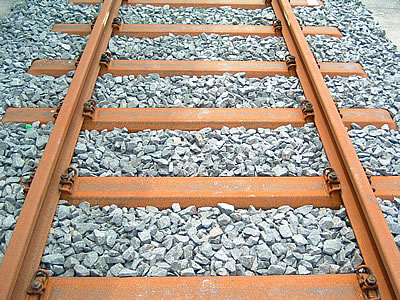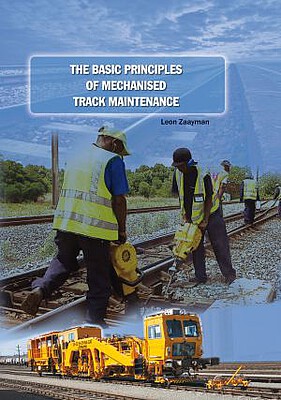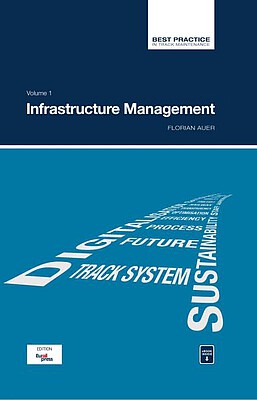Steel sleepers / ties
Various shapes made of cast steel were tested for many decades. The sleepers were too thin and the holes for the rail fastening developed cracks. In addition, the friction of steel and ballast reduces the transverse displacement resistance.
The hollow sleeper with downward curved ends, also called caps, has a life of 40 - 60 years. Experience with hollow sleepers, which is the type of steel sleeper purchased, was then used to meet the requirements of tracks and turnouts. As time went by they were installed in turnouts, since they held the gauge well. Unfortunately, steel sleepers suffer serious damage in derailments, so replacement is absolutely necessary.
Advantages:
- long life (40 - 60 years)
- coach screws are not required because sole plates are welded to the steel sleeper
- large longitudinal and transverse displacement resistance of the track
- lower manufacturing costs because of low steel prices as drying and impregnation are not necessary
- reconditioning of old sleepers is possible, but not after derailment.
Disadvantages:
- rust quickly
- high installation and maintenance costs
- after derailments there is a gauge tightening, consequently sleeper replacement is necessary
- insulation problems with the signalling current
- susceptibility of the weld between ribbed plate ceiling and sleeper cover
- low weight, resulting in poor track geometry
You can find suitable specialist literature to the topic here:
The Basic Principles of Mechanised Track Maintenance
This book is dedicated to the many people involved in the day to day planning and performance of track maintenance activities. Providing a practical approach to everyday challenges in mechanised track maintenance, it is not just intended as a theoretical approach to the track system.
Railways aim at transporting people and freight safely, rapidly, regularly, comfortably and on time from one place to another. This book is directed to track infrastructure departments contributing to the above objective by ensuring the track infrastructure’s reliability, availability, maintainability and safety – denoted by the acronym RAMS. Regular, effective and affordable track maintenance enable RAMS to be achieved.
Best Practice in Track Maintenance, Vol 1 - Infrastructure Management
Infrastructure Management Volume 1 looks at aspects of infrastructure management with particular reference to the single European railway area. Based on best-practice examples from Central Europe, measures for the targeted retrofitting and improvement of the infrastructure maintenance of the existing network are presented. In many cases, infrastructure operators are faced with a generational change, which accelerates the process. Modern information and communication technology can simplify the comprehension and presentation of complex contexts. Modified approaches to asset management and life-cycle management enable implementation of the "transparent permanent way" or the "railway 4.0".



